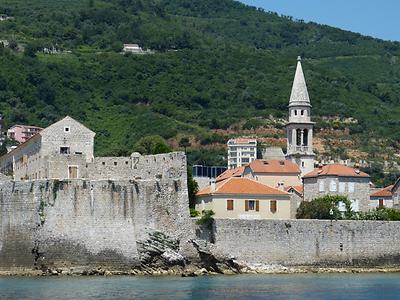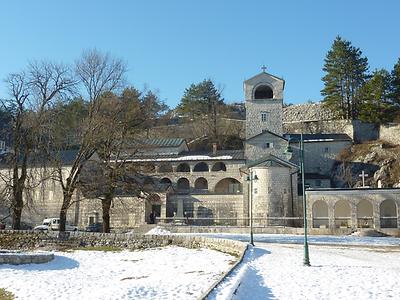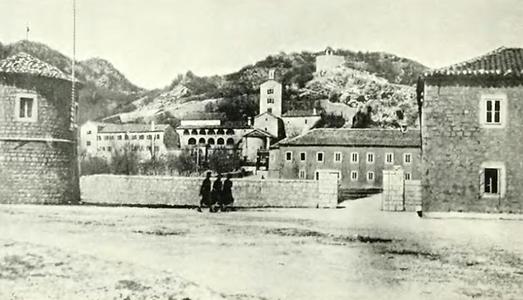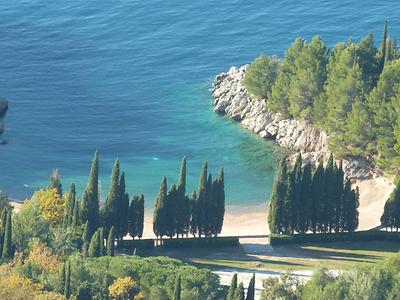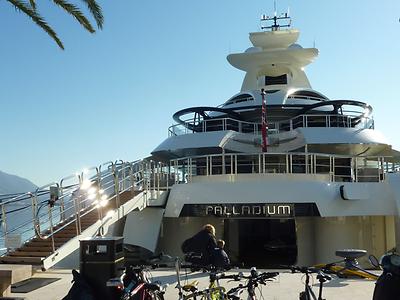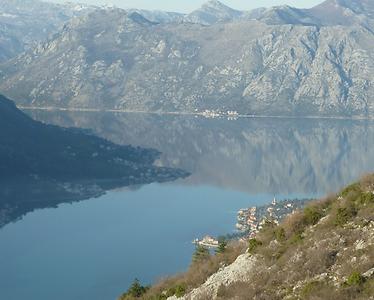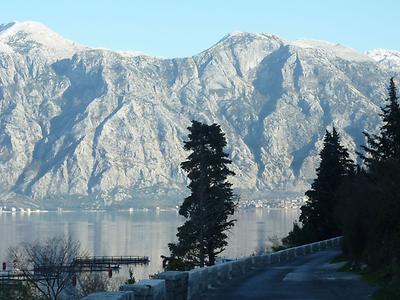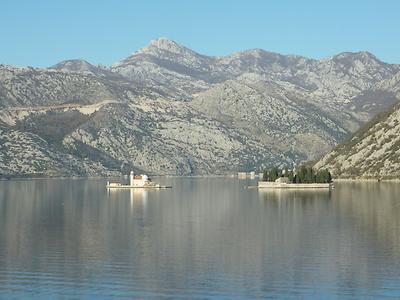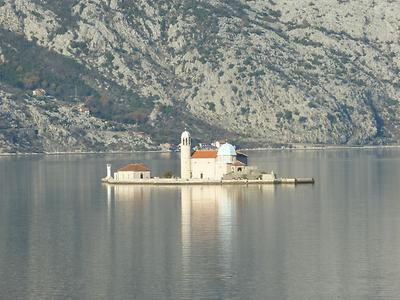New year in Montenegro#
A generous friend invited us and a number of friends to celebrate the end of 2012 in a posh hotel in Milocer, in the bay of Budva. Celebrating New Year in Montenegro is rather special: it is not just one night of celebration, but rather consists of four nights: evening and night of December 31 (as usual in many countries), evening and night of January 1, and then again, usually a week later, to celebrate the end and start of the Serbian orthodox new year. Remember that only a slim majority of 55% voted in 2006 to become an independent nation!
Long nights did shorten our days, but with daylight short, anyway, we enjoyed beautiful day-excurssions to Budva, to the old royal capital Centije with a glance at the capital Podgorica, the border to Albania, a bit of the coast, the super modern yachting complex in Tivat, and the bay of Kotor.
The best start is probably a picture from one of the many celebrations, and the typical scenery during the day:

Looking down to Budva seems to agree with what we have read abouzt it: "Budva is the centre of Budva Municipality. The coastal area around Budva, called the Budva riviera, is the center of Montenegrin tourism, known for its well preserved medieval walled city, sandy beaches and diverse nightlife. Budva is 2,500 years old, which makes it one of the oldest settlements on the Adriatic coast."
Cetinje was the Old Royal Capital of Montenegro. It is the official residence of the President of Montenegro with the “blue palace”, but is also the seat of Montenegrin Ministry of Culture, National Museum of Montenegro, National library, State archives. Also, from 2017 it will be a seat of Ministry for Foreign Affairs, maybe breathing new diplomatic life into what was once a town full of foreign embassies. Also small as town (with fewer than 15.000 inhabitants) Cetinje is of great historical significance. It was founded in the 15th century and became the center of Montenegrin culture and an Orthodox religious center. Its status as the honorary capital of Montenegro is due to its heritage as a long-serving former capital of Montenegro.
It is famous for its old churches, the variety of museums and particularly the Serbian Orthodox monastery. It is a center of historical and cultural importance, founded between 1701 and 1704. There are several relics in the monastery: remains of St. Peter of Cetinje the right hand of John the Baptist, particles of the True Cross, the royal crown of Serbian king Stephen Uroš III Dečanski, and three famous bells that are reminiscent of Habsburg influence.
Tivat is located in the central part of the Bay of Kotor. It has an exit to open sea at the tourist location Pržno inlet near Radovići village to the south.
In 1889 the Naval arsenal was built by Austrians, and was later used as a naval military base of the Italian Navy, the Yugoslav People's Army and the Army of Montenegro. The base was also used by Russia and Libya as the technical base for maintenance, repair and overhaul of their ships and submarines.
The new owner of the naval base, Canadian billionaire Peter Munk realized plans to build in Tivat a luxury marina for mega-yachts. The marina is now called, "Porto Montenegro" and certainly one of the most POSH known to the author, with exclletn infrastructure like top hotels and restaurants, certainly coming close to the dream of Munk to turn the city into the "Monaco of the southern Adriatic."






